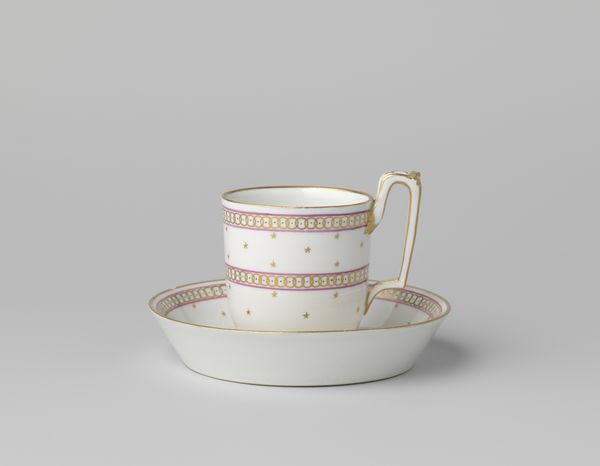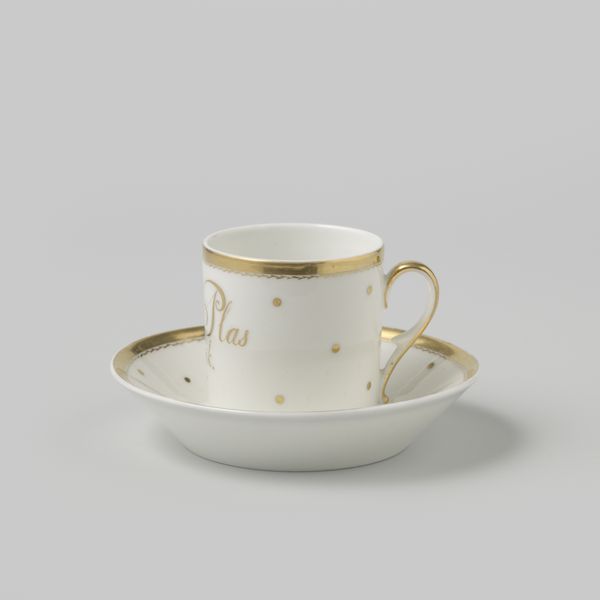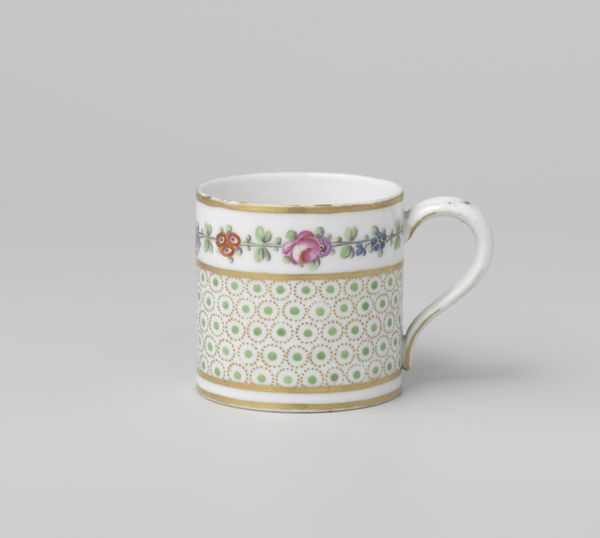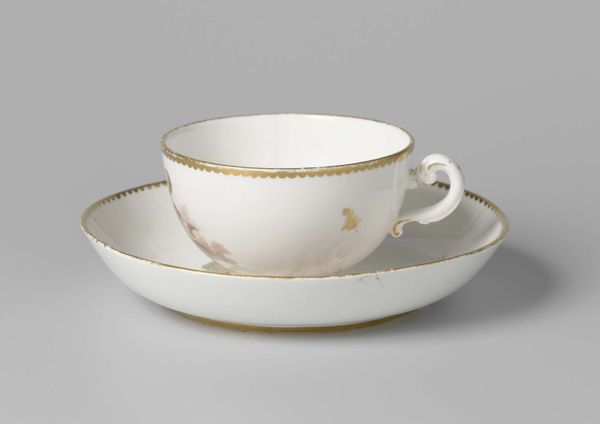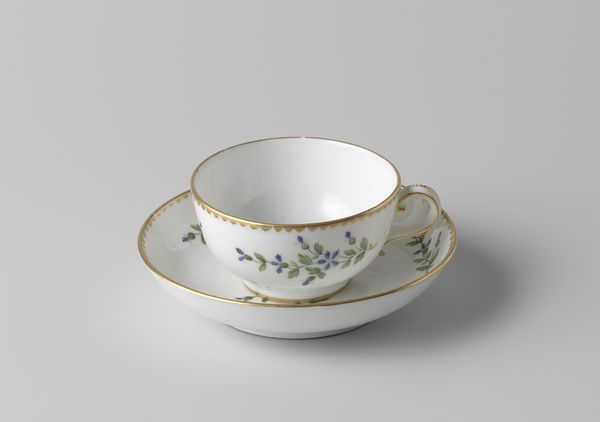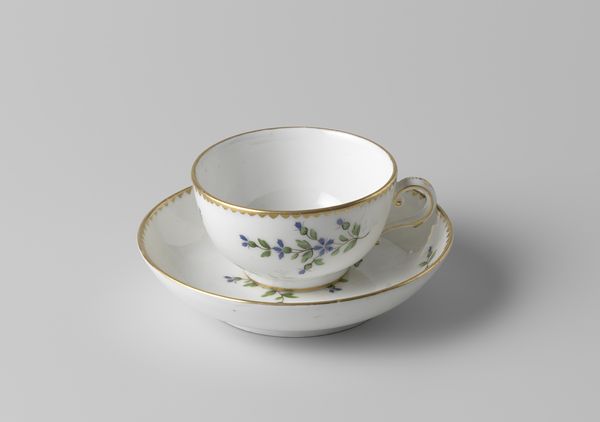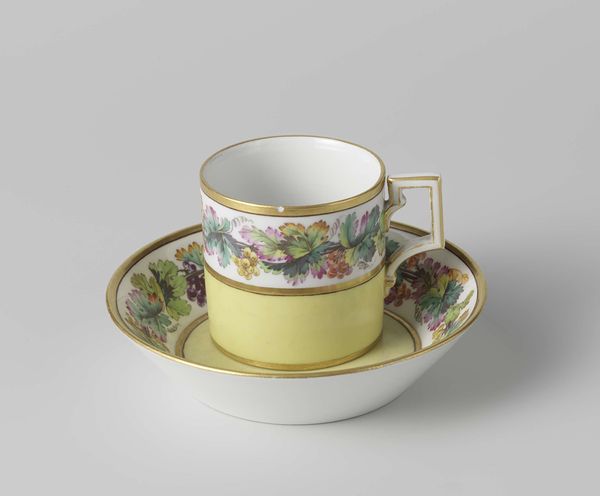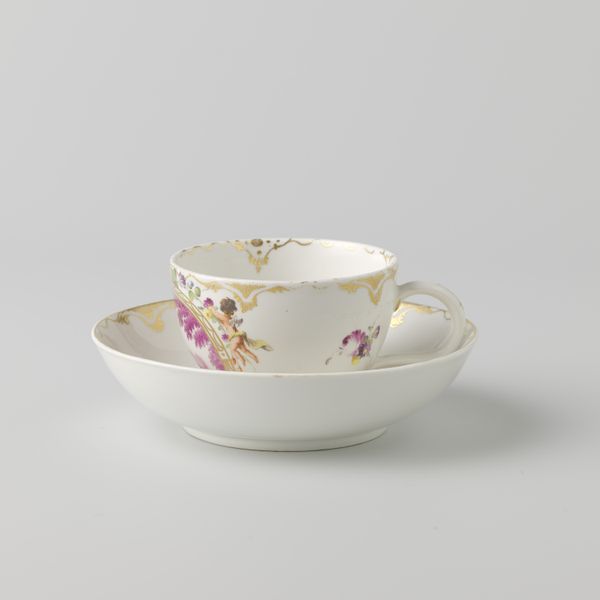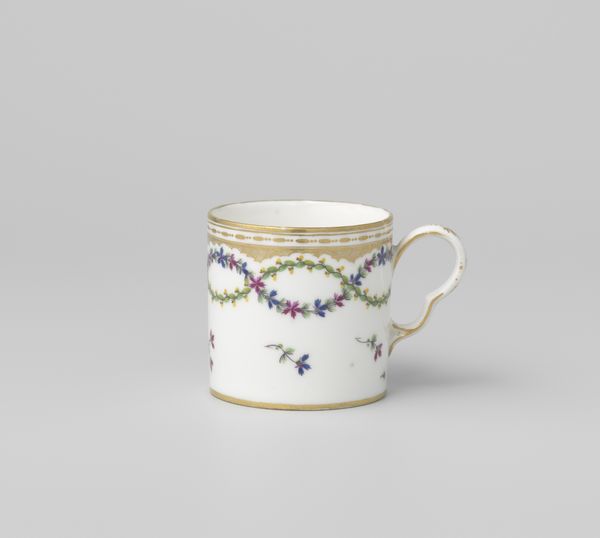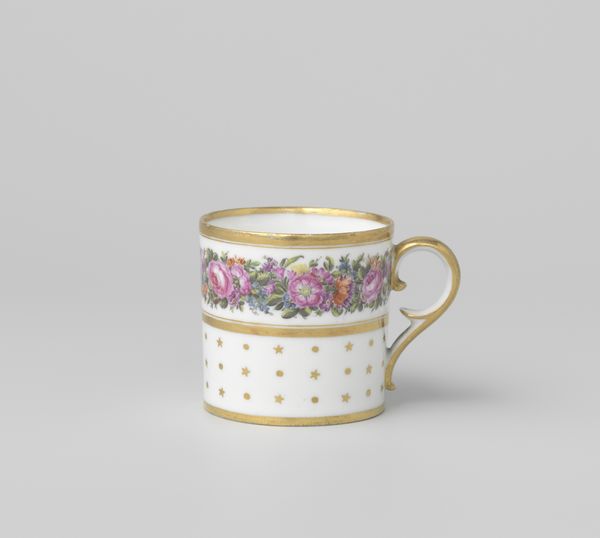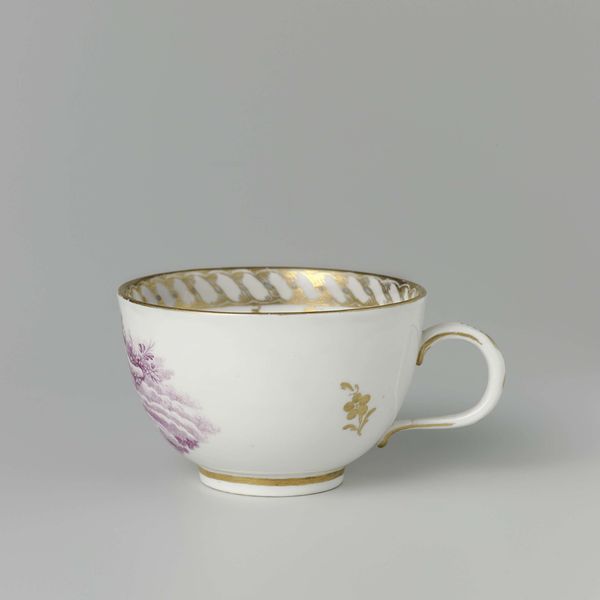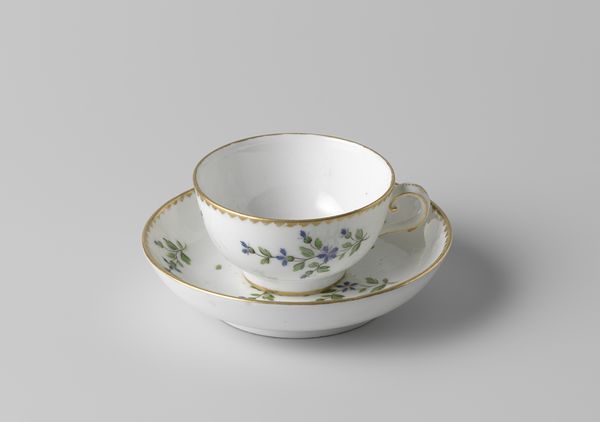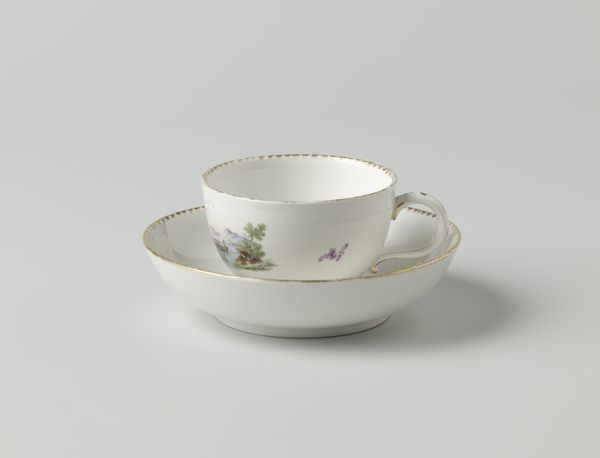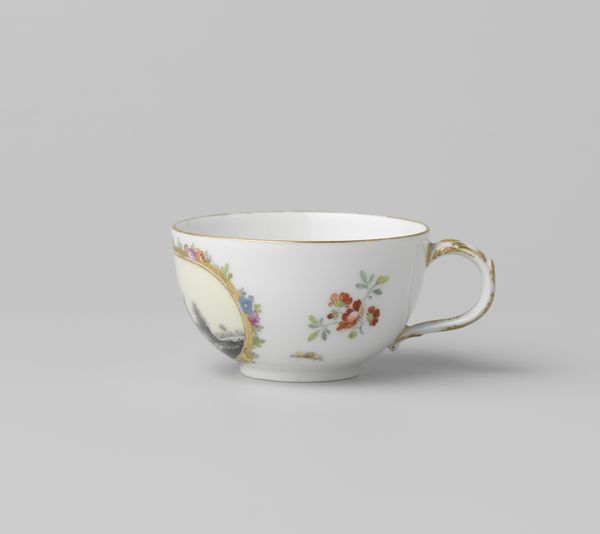
Cup and saucer with stars and ornamental borders c. 1791 - 1801
0:00
0:00
ceramic, porcelain
#
neoclacissism
#
ceramic
#
porcelain
#
decorative-art
Copyright: Rijks Museum: Open Domain
Editor: This elegant porcelain cup and saucer, made around 1791-1801 by the Kaiserliche Porzellanmanufaktur, strikes me as both delicate and regal, with its restrained color palette. The symmetrical design and star motifs really catch the eye. What do you see in this piece that reveals its cultural and historical context? Curator: Well, its Neoclassical style certainly speaks volumes. Notice the crisp lines and the overall pursuit of perfect form, hallmarks of that era's fascination with ancient Greece and Rome. These aesthetics weren't just about art; they reflected societal aspirations of order, reason, and virtue. Who do you think would use an item like this and how was it perceived by them at the time? Editor: It's hard to imagine someone using this cup and saucer casually; perhaps only for extremely special events or occasions? It does come off as almost a precious, symbolic object for display rather than everyday usage, right? Curator: Precisely. Porcelain, especially of this quality, was a luxury item that served as a status symbol. The act of owning and displaying such pieces subtly reinforced social hierarchies. This wasn't just about having a cup; it was about signaling your position and taste within a very structured society. The "public role" of objects extended beyond their utilitarian function. Also, did the company that produced the items receive royal funding? Editor: It seems so from its name, the Imperial Porcelain Manufacture... I had not thought of luxury items as political statements, so it does provide another aspect to consider and admire regarding artworks. It truly enriched my perspective! Thank you for this great explanation. Curator: Indeed, by examining such pieces, we glimpse a window into the socio-political dynamics of the past and recognize art's role in mirroring those structures. Thanks for sharing your thoughts; I appreciated the chance to unpack some of the historical and social context embedded within this refined object.
Comments
No comments
Be the first to comment and join the conversation on the ultimate creative platform.
